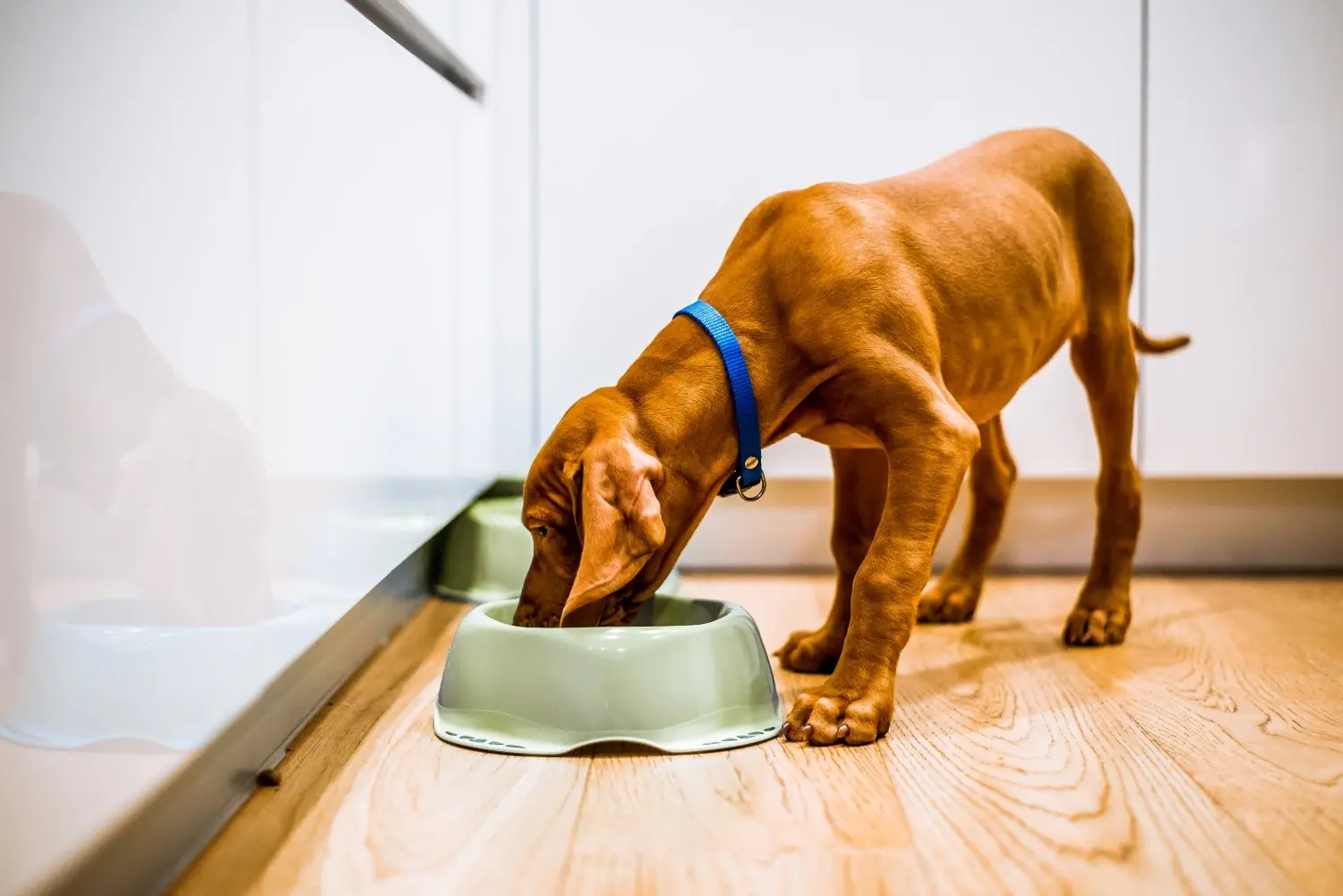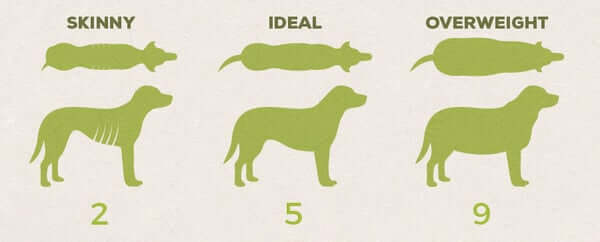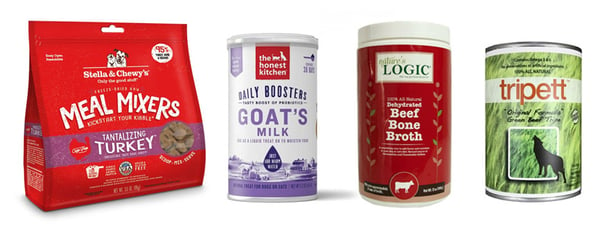
7 Tips for How to Fatten Up a Dog
Is my dog too skinny? How do I help my skinny dog gain weight? How to make your dog fat? What human food can I give my dog for healthy weight gain? If you’ve been asking yourself these questions about your pet, you’re in the right place. Clearly, you want to learn the answers to - How to get my dog to gain weight? This guide will teach you everything you need to know about helping your dog safely gain weight.
When you search weight management for adult dogs, all you get is information about helping your dog lose weight, get in shape, or stay active. But what if that’s not the issue? What if you need to know how to fatten up a dog instead?
What can I give my dog to gain weight?
If your dog is underweight due to illness, growth, or even poor diet, you’ll need to help her bulk up safely. You could just feed her more, but that doesn’t necessarily translate to a healthier dog.
Ready to learn about the right food to help dogs gain weight?
How to fatten up a dog? I know I said fatten up your dog, but our real goal is to build and maintain muscle with a healthy diet and exercise. Appropriate muscle and energy can help improve mobility, joint function, and your dog's overall health, especially as she ages.
1. Consult with Your Vet
As always, it’s important to talk to your vet about your dog’s weight before you get started on any new diet plan or change in routine. Sudden weight loss or unexplained weight fluctuations could be a symptom of another issue. Make sure your dog is healthy before you try to bulk her back up.
2. Set Small Goals
There are several ways to help your dog gain weight, but you need to be sure that she isn't putting on the wrong kind of weight or putting on weight too fast. A sudden or drastic weight gain can damage their joints as the pressure of their extra weight increases.
As you begin, make sure you set small goals for your dog. It could be as small as half a pound at a time. Baby steps will allow your pet to gain weight gradually and avoid any subsequent health issues.
3. Monitor Changes Closely
How can you tell if your dog is gaining weight? It’s important to know what to look for as you make changes in their diet and routine. Feel their ribs, and hips, and look at them from above and from a profile. Even if their weight hasn't changed much, you can still see progress in their body's definition.
As your pet gains weight and builds muscle, its weight changes ribs and hips, shouldn't feel as pronounced, and there should be more bulk around the hips, shoulders, and chest. This indicates healthy muscle development.
You are also looking at her energy levels. Healthy muscle and the appropriate calories will give your dog consistent energy to participate in her daily routines and activities.
Use this body conditioning score grain-free dog foods chart to see if your dog is starting to look healthier.

4. Don't Add Too Much Fat
So what can you give your dog to help him gain weight? The key is to understand what parts of his diet to increase and which parts you should keep the same.
Avoid adding large portions of fat to your pet’s diet. If you are increasing fat and protein, do it in small quantities. Excess fat can add stress to the separation anxiety pancreas and cause digestive issues. Small portions can help them get used to the increase in dog foods in both volume and nutrients and prevent unpleasant reactions to diet changes.
5. Feed High Quality Calories
To bulk up your dog, of course, you need high-calorie food for dogs or fattening dog food, but that’s only one side of the coin. As you increase calories, you must ensure that they are calories that she will actually use.
Pumping her full of calories that she isn’t using will lead to weight gain, but not muscle development. Instead, you need to have an appropriate balance of high-calorie dog food and activity to ensure that your body is using those grain-free calories to build muscle and provide energy to her body. High-calorie human food for dogs.
Check out our dog food calculator to help you find the appropriate feeding guidelines to start your dog's weight gain journey.
Food Toppers

Helping your dog bulk up will require calories from high-quality proteins and fats. You don’t necessarily need to change your dog’s whole diet or separation anxiety especially if you are already feeding a meat-rich, premium diet. Instead, you can add body weight to their current dog diet to help them reach their goal weight.
Here are some tasty toppers that will make your dog’s diet more calorie-dense:
Human Food

Another way to increase your dog’s calories is to offer them some of your food. I’m sure your dog will jump for joy at that thought. Not all human foods are safe to offer your dog, and not all of them will help you meet your dog’s weight goals.
Here are some of the best human foods to help your dog bulk up:
-
- Eggs - Raw, scrambled, over easy. Just make sure they are plain.
- Cottage Cheese - Full fat.
- Lean meat - Raw or cooked to match their diet.
- Quinoa – It provides usable energy to fatten up your dog and is one of the only carbs that contains a full spectrum of essential amino acids needed for muscle building.
6. Track the Changes
Adding calories to your dog’s diet should be done gradually. You can’t just double her portions and hope for the best. Instead, you need to slowly increase portions over time.
Here’s a basic example of how you can start putting weight on your dog safely.
![]()
Tracking changes to your dog's meals and recording weekly weight check-ins can help you learn what works and what doesn't.
The values in this chart aren’t going to be right for every dog. Smaller dogs will need smaller changes, and a larger dog may be able to handle more drastic increases. Stick to around 10-15% increases at a time.
7. Increase Activity
As you increase calories, you need to increase activity too. An extra 5 minutes on your walk, a few more ball tosses in the backyard, fattening up a dog or even some extra mental exercise like puzzles and indoor dog games can be helpful.
To find out how much exercise your dog needs, check out our Ultimate Guide to Exercising your Dog.
Always Play is Safe
Make sure you talk to your vet about your dog’s ideal weight and how to fatten it. You want to avoid going over your dog’s target weight and making them chunky. It's very important to think of weight gain in terms of muscle growth and not just gaining fat.
It's also important to not overfeed high-calorie foods that don't offer much nutritional value. Junk food may increase calorie intake, but if those calories are tied to healthy whole-food ingredients, then this diet change could lead to digestive issues.
If your dog needs to put on a significant amount of weight to fatten up a dog, then it’s best to talk to your vet about the safest ways to make more drastic changes to their diet and routine.
Frequently Asked Questions
Is my dog too skinny?
Determining if your dog is too skinny requires considering their breed, age, and overall health. Consult with your veterinarian to assess your dog's body condition score and discuss any concerns you may have. They can provide guidance on whether your dog is at a healthy weight or if there may be underlying medical issues that may need attention.
How do I help my skinny dog gain weight?
To help your skinny dog gain weight, it's important to first rule out any underlying medical conditions that may be causing the weight loss. If your dog is healthy, then start increasing your dog's portion sizes, feeding them high-quality, calorie-dense dog food, and adding healthy supplements like omega-3 fatty acids or digestive enzymes to their daily diet regime.
How to make your dog fat?
Making your dog fat is not a healthy goal. Instead, focus on helping your dog achieve a healthy weight through proper nutrition and exercise. If your dog is underweight, consult with a veterinarian to find the underlying cause and develop a safe and effective weight gain plan tailored to your dog's specific needs.
What human food can I give my dog to gain weight?
While it's generally recommended to feed dogs a balanced diet formulated for their specific nutritional needs, certain human foods can be used to help your dog gain weight. These include cooked chicken, turkey, lean beef, plain yogurt, eggs, sweet potatoes, and pumpkin. Many of the top foods contain these healthy ingredients.
What can I give my dog to gain weight?
To help your dog gain weight, you can try a few things. First, choose a high-quality dog food that is calorie-dense and contains real meat, healthy fats, and complex carbohydrates. Increase the portion size and feeding frequency to provide more calories throughout the day. You can include calorie-dense treats or additions to their meals, such as cooked chicken or boiled eggs.
Can stress or anxiety cause weight loss in dogs?
Yes, stress or anxiety can potentially cause weight loss in dogs. Just like humans, dogs may experience appetite changes or have difficulty maintaining a healthy weight when stressed or anxious. If you suspect that your dog's weight loss is related to stress or anxiety, consult with a veterinarian to address the underlying causes and explore potential solutions.
Are there any specific dog breeds that are naturally leaner?
Yes, some dog breeds tend to have a naturally leaner body structure. Breeds like Greyhounds, Whippets, and some Terrier breeds, for example, have a lean and slender build even when at a healthy weight. It's important to understand the breed standards and consult with a veterinarian to determine if your dog's weight is appropriate for their specific breed.
Are there any potential health concerns associated with rapid weight gain in dogs?
Rapid weight gain in dogs can pose health risks, including an increased strain on joints and bones, exacerbation of existing health conditions, and an increased risk of obesity-related health issues. It's crucial to ensure that any weight gain plan is implemented gradually and under the guidance of a veterinarian to minimize the risk of health complications.
How long does it typically take for a dog to gain weight?
The time it takes for a dog to put on pounds can vary depending on many things, such as the dog's overall health, metabolism, and the desired amount of weight gain.
Generally, it's important to take a gradual approach to weight gain to ensure it is done safely and in a way that promotes the dog's overall health. It's best to work with a veterinarian to develop a customized weight gain plan for your dog.
.png?width=200&height=66&name=logo%20(1).png)



.jpg)

